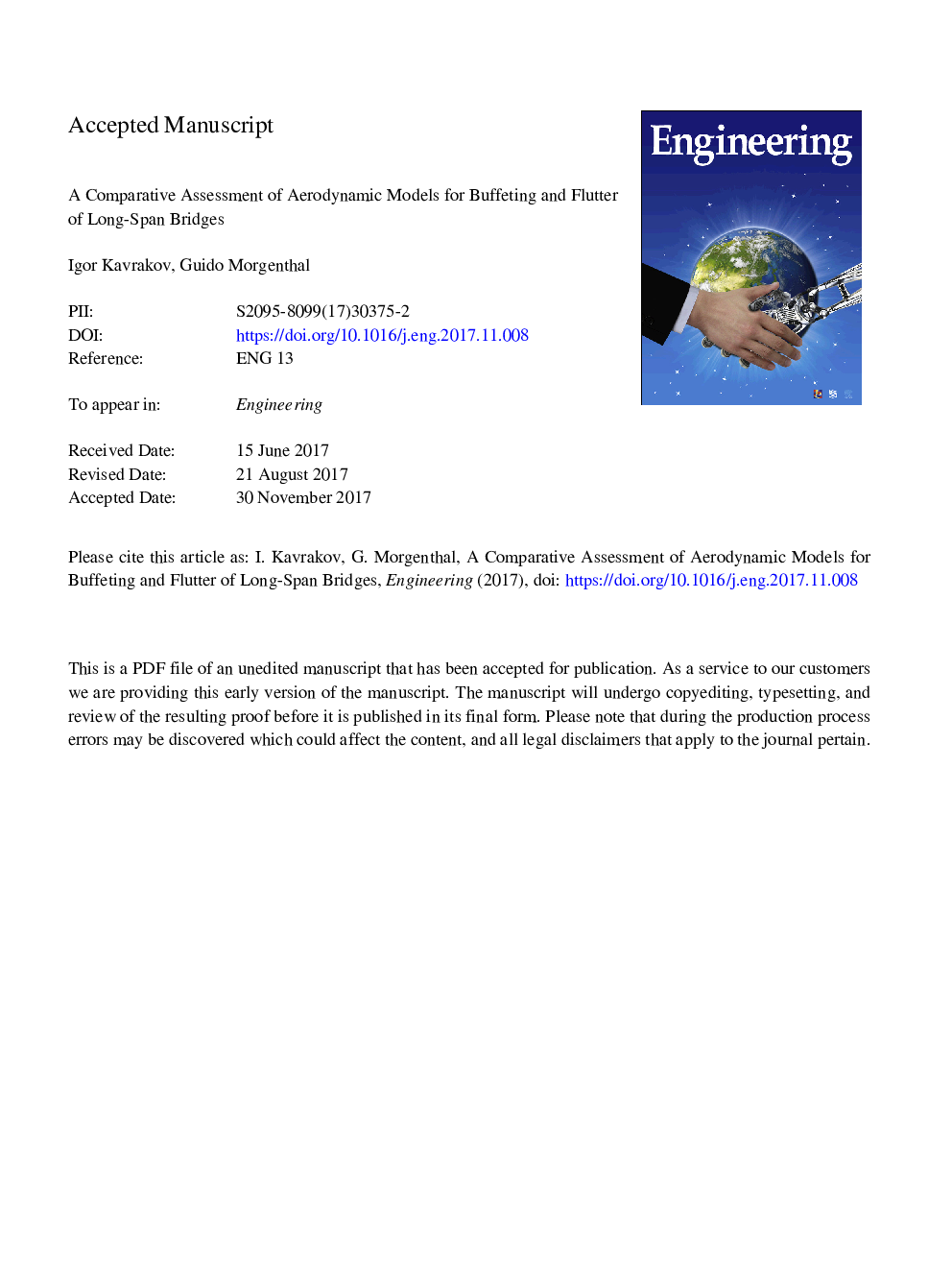| کد مقاله | کد نشریه | سال انتشار | مقاله انگلیسی | نسخه تمام متن |
|---|---|---|---|---|
| 6893392 | 1445561 | 2017 | 23 صفحه PDF | دانلود رایگان |
عنوان انگلیسی مقاله ISI
A Comparative Assessment of Aerodynamic Models for Buffeting and Flutter of Long-Span Bridges
ترجمه فارسی عنوان
ارزیابی مقایسه ای از مدل های آیرودینامیکی برای بوفینگ و لرزش های پل های طولانی مدت
دانلود مقاله + سفارش ترجمه
دانلود مقاله ISI انگلیسی
رایگان برای ایرانیان
کلمات کلیدی
ترجمه چکیده
ارتعاشات ناشی از باد اغلب نشان دهنده معیار اصلی در طراحی پل های طولانی است. نیروهای آیرودینامیکی در آیرودینامیک پل به طور عمده بر اساس تئوری ناپایدار و ناپایدار خطی هستند. هدف از این مقاله بررسی ساختارهای مختلف نیروهای خود هیجان انگیز و بافندگی در حوزه زمان با مقایسه پاسخ دینامیکی پل چندساله ای کابل در طول شرایط ارتقاء بحرانی است. این پل برای نشان دادن یک شیء مرجع معمول با یک جعبه جعبه بتن بلوف برای عبور از رودخانه بزرگ انتخاب شده است. مدل ها از یک منظر از پیچیدگی مدل مشاهده شده اند، مقایسه تاثیرات خواص آیرودینامیکی که در مدل های آیرودینامیکی ذکر شده اند، نظیر سقوط و سفتی آئرودینامیکی، حافظه مایع در نیروهای بوجود آمده و نیروی خود، نیروی ناهمگونی آیرودینامیکی، و اتصال آیرودینامیکی در پاسخ پل مدل های انتخاب شده برای محدوده سرعت باد که برای مرحله دو مرحله ای برای شدت آشفتگی معمول است، مورد مطالعه قرار می گیرند. علاوه بر این، یک روش ساده برای محاسبه نیروهای ضرب و شتم از جمله اعمال آیرودینامیکی ارائه شده است که در آن تقریب منطقی اجتناب شده است. سرعت های فلوتاسیون بحرانی نیز برای مدل های انتخاب شده تحت جریان لمینار مقایسه می شود.
موضوعات مرتبط
مهندسی و علوم پایه
مهندسی کامپیوتر
علوم کامپیوتر (عمومی)
چکیده انگلیسی
Wind-induced vibrations commonly represent the leading criterion in the design of long-span bridges. The aerodynamic forces in bridge aerodynamics are mainly based on the quasi-steady and linear unsteady theory. This paper aims to investigate different formulations of self-excited and buffeting forces in the time domain by comparing the dynamic response of a multi-span cable-stayed bridge during the critical erection condition. The bridge is selected to represent a typical reference object with a bluff concrete box girder for large river crossings. The models are viewed from a perspective of model complexity, comparing the influence of the aerodynamic properties implied in the aerodynamic models, such as aerodynamic damping and stiffness, fluid memory in the buffeting and self-excited forces, aerodynamic nonlinearity, and aerodynamic coupling on the bridge response. The selected models are studied for a wind-speed range that is typical for the construction stage for two levels of turbulence intensity. Furthermore, a simplified method for the computation of buffeting forces including the aerodynamic admittance is presented, in which rational approximation is avoided. The critical flutter velocities are also compared for the selected models under laminar flow.
ناشر
Database: Elsevier - ScienceDirect (ساینس دایرکت)
Journal: Engineering - Volume 3, Issue 6, December 2017, Pages 823-838
Journal: Engineering - Volume 3, Issue 6, December 2017, Pages 823-838
نویسندگان
Igor Kavrakov, Guido Morgenthal,
